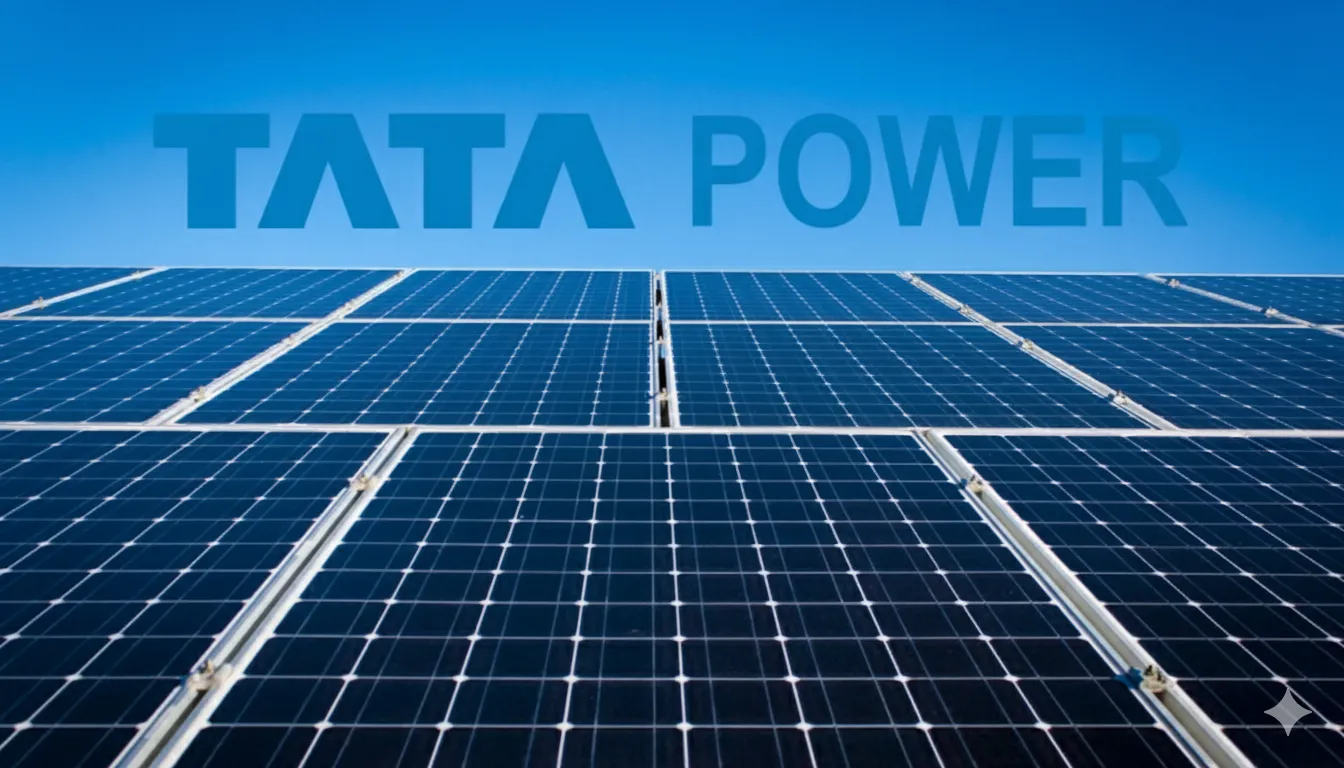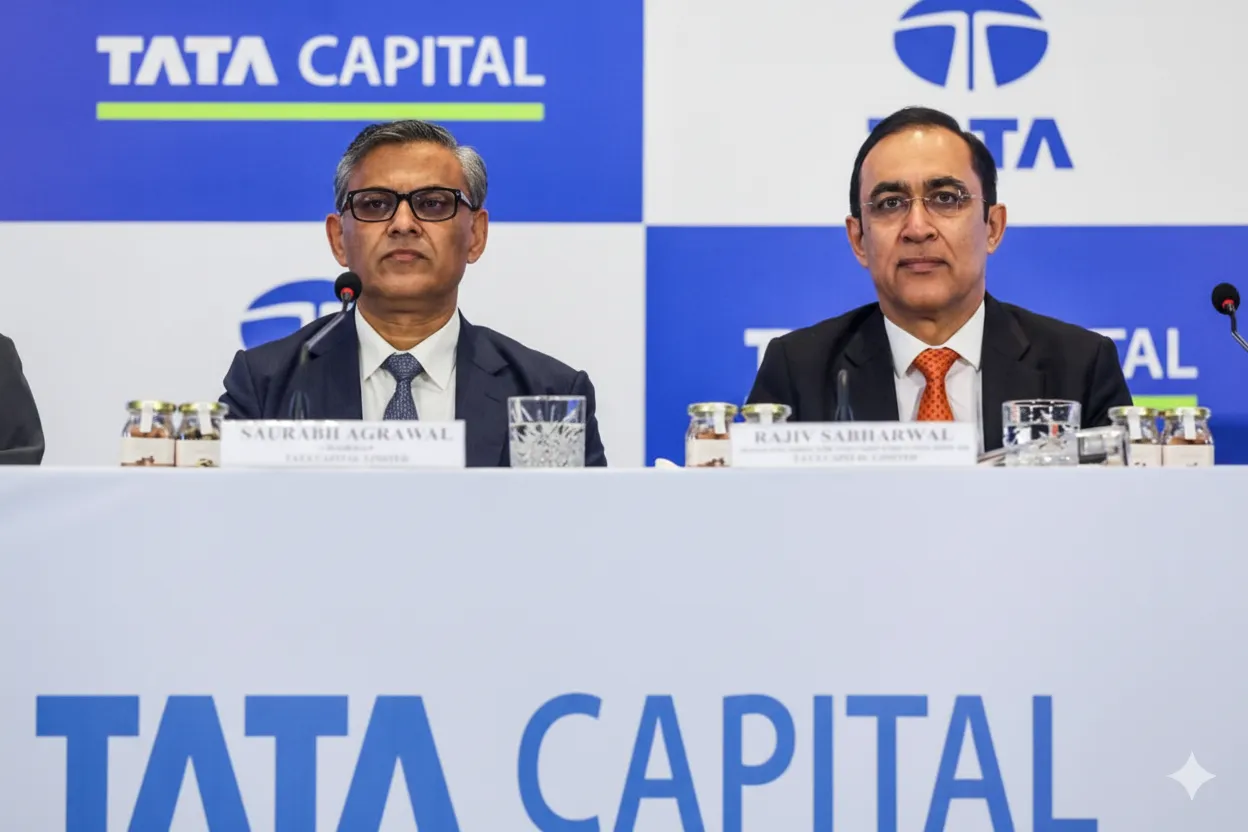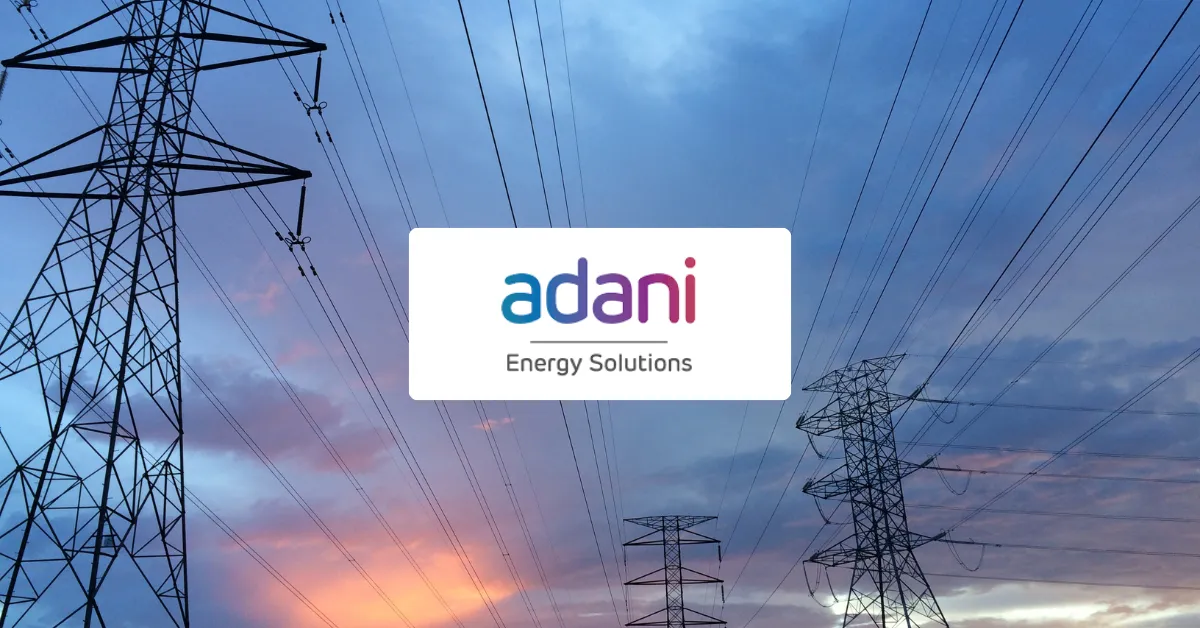Tata Power Company Ltd (NSE: TATAPOWER) is one of India’s most prominent integrated power utilities, spanning generation, transmission, distribution, and renewable energy. As of October 2025, the stock trades near ₹391.55, marking a recovery from its yearly low of ₹326.35, though below its 52-week high of ₹474.40.
Tata Power has emerged as a major player in India’s clean energy transition, with over 25.7 GW of operational and under-construction capacity. The company aims to source 70% of its total capacity from renewables by 2030, aligning with India’s national goal of achieving 500 GW of non-fossil fuel capacity.
Investors are watching Tata Power closely as it continues expanding its EV charging network, solar EPC projects, and transmission assets while maintaining a stable profit trajectory and consistent dividend policy.
Aout the Company
Founded in 1911, Tata Power Company Ltd is a flagship enterprise of the Tata Group. It operates across multiple segments:
- Power Generation (thermal, hydro, solar, and wind)
- Transmission & Distribution (Mumbai, Delhi, Odisha, and others)
- Renewables & EPC Solutions
- EV Charging Infrastructure
As of FY2025, Tata Power has installed 5,488 public EV charging points across India and holds an EPC order book of ₹11,381 crore, primarily in the solar space. With its aggressive renewable push, Tata Power has become a key beneficiary of India’s green economy momentum.
Fundamental Analysis
Revenue & Profit Trends
| Metric | FY2025 | YoY Growth |
|---|---|---|
| Revenue | ₹64,502 Cr | +4.8% |
| EBITDA | ₹14,468 Cr | +13.9% |
| PAT | ₹4,775 Cr | +11.6% |
| EPS | ₹13.53 | +26.4% (adj.) |
| ROE | 12.8% | Stable |
| Dividend Payout | 45% | Consistent |
Tata Power reported its 22nd consecutive profitable quarter in FY2025, driven by renewables and T&D (Transmission & Distribution) growth. The renewable segment contributed ₹9,876 Cr in revenue and ₹4,317 Cr in EBITDA, up 26% YoY.
Valuation Metrics (FY2025)
| Metric | Value | Comment |
|---|---|---|
| P/E Ratio | 28.9x | Reasonable for growth stock |
| ROE | 12.8% | Strong, stable performance |
| EPS | ₹13.53 | Rising earnings per share |
| Debt-to-Equity | 1.05x | Improving leverage ratio |
Tata Power’s valuation remains justified given its robust earnings growth and renewable leadership position.
Balance Sheet Strength (FY2025)
| Key Metric | FY2025 Value | Remarks |
|---|---|---|
| Total Assets | ₹1,56,710 Cr | Strong infrastructure base |
| Total Equity | ₹42,606 Cr | Solid capital structure |
| Total Debt | ₹67,996 Cr | Under control |
| Net Debt | ₹58,413 Cr | Down YoY |
| Net Debt-to-Equity | 1.05x | Healthy balance sheet |
Debt remains elevated but manageable due to steady cash flows from regulated T&D operations and renewable projects.
Shareholding Pattern (as of Sept 2025)
| Shareholder Type | Holding (%) |
|---|---|
| Promoters (Tata Sons) | 46.9% |
| FIIs | 11.4% |
| DIIs | 29.2% |
| Public & Others | 12.5% |
Institutional participation reflects strong confidence in Tata Power’s long-term renewable transition strategy.
Past Stock Performance
Over the last decade, Tata Power has delivered impressive returns, rising from ₹75 in 2015 to around ₹391 in 2025, translating to a CAGR of ~17%.
- 1-Year Return: +12%
- 3-Year Return: +52%
- 5-Year Return: +140%
The rally has been supported by policy tailwinds in renewable energy and consistent earnings improvement. Despite periodic corrections, long-term investors have enjoyed compounding growth.
Tata Power Share Price Target for 2025–2050
| Year | Minimum (₹) | Average (₹) | Maximum (₹) |
|---|---|---|---|
| 2025 | 390 | 460 | 550 |
| 2026 | 480 | 540 | 600 |
| 2027 | 520 | 600 | 690 |
| 2028 | 580 | 690 | 800 |
| 2029 | 640 | 760 | 900 |
| 2030 | 810 | 1,050 | 1,345 |
| 2035 | 1,200 | 1,500 | 1,800 |
| 2040 | 2,154 | 2,950 | 3,690 |
| 2045 | 1,800 | 2,500 | 2,900 |
| 2050 | 2,500 | 3,200 | 4,000 |
Tata Power Share Price Target & Prediction 2025–2050
Tata Power Share Price Target 2025
Analysts project a range of ₹450–₹550 for 2025, driven by EBITDA growth (+14%), increased renewable capacity (1 GW added), and strong Q1FY26 performance.
Tata Power Share Price Target 2026
By 2026, expected range ₹480–₹600 as the company expands its EV charging network and solar EPC portfolio, boosting revenue visibility.
Tata Power Share Price Target 2027
The stock could trade between ₹520–₹690, reflecting rising profitability from new clean-energy projects and steady T&D margins.
Tata Power Share Price Target 2028
In 2028, Tata Power’s expansion in distributed solar and EV infrastructure could push prices to ₹580–₹800, assuming double-digit earnings growth.
Tata Power Share Price Target 2029
Estimated at ₹640–₹900, supported by full integration of renewable projects and improved free cash flow position.
Tata Power Share Price Target 2030
2030 targets of ₹810–₹1,345 assume revenue reaching ₹1 lakh crore, PAT nearing ₹10,000 Cr, and renewable share of total capacity crossing 70%.
Tata Power Share Price Target 2035
Projected range ₹1,200–₹1,800, backed by steady 10–12% profit CAGR and sector leadership in renewable EPC and battery storage.
Tata Power Share Price Target 2040
Long-term estimates of ₹2,154–₹3,690 reflect technological advancements, strong ESG credentials, and dominance in India’s energy transformation.
Tata Power Share Price Target 2045
With sector maturity, the range of ₹1,800–₹2,900 accounts for stabilization of growth rates and capital recycling in renewables.
Tata Power Share Price Target 2050
Highly speculative ₹2,500–₹4,000 projection assumes continued expansion, India’s net-zero transition, and leadership in solar, EV, and storage solutions.
Growth Drivers
- Aggressive Renewable Expansion – 70% clean capacity target by 2030.
- EV Charging Infrastructure Growth – 5,488 public chargers operational; aiming for 1 lakh stations.
- Government Support – Favorable renewable and transmission policies.
- Rising Urban Power Demand – Electrification and smart grid projects.
- Stable T&D Business – Predictable earnings and strong regulatory support.
- Technology & ESG Focus – Investing in digitalization and sustainability.
Expert Views
- Antique Broking maintains a Buy with a target of ₹467, citing PAT growth and renewable visibility.
- Trendlyne consensus suggests ₹490, highlighting strong renewable margins.
- StockTwits analysts project ₹550–₹600 by Diwali 2025, linking upside to the EV segment.
- Long-term bloggers predict multibagger potential if revenue and earnings sustain 10–15% CAGR through 2030.
Risks & Challenges
- High Debt Levels – ₹68,000 Cr gross debt; refinancing pressure.
- Regulatory Risks – Tariff changes or renewable policy delays.
- Competition – Adani Power and JSW Energy expanding aggressively.
- Execution Delays – Project approvals and grid integration challenges.
- Input Cost Volatility – Coal and equipment cost fluctuations.
Investment Suitability
Tata Power is suitable for:
- Long-term investors seeking stable growth from the clean energy sector.
- ESG-focused portfolios and mutual funds emphasizing renewable energy.
- Investors with a 5–10 year horizon aiming for compounding returns.
Not ideal for:
- Short-term traders expecting quick rallies.
- Risk-averse investors avoiding cyclical utilities.
FAQs
1. What will be Tata Power’s share price in 2030?
Tata Power’s 2030 target is estimated between ₹810 and ₹1,345, assuming continued renewable expansion and revenue growth to ₹1 lakh crore.
2. Can Tata Power reach ₹600 by 2026?
Yes, based on strong earnings and EV infrastructure growth, reaching ₹600 by 2026 is achievable.
3. Is Tata Power good for long-term investment?
Yes — it’s one of India’s most stable power companies with sustainable long-term growth potential in renewables, EV charging, and transmission.
Conclusion
Tata Power stands at the heart of India’s clean energy revolution. With strong fundamentals, consistent profitability, and strategic expansion into renewables and EV infrastructure, it offers both stability and growth for long-term investors.
While short-term fluctuations are possible, the company’s long-term prospects remain robust — supported by India’s push toward green energy, policy reforms, and infrastructure modernization.
Tata Power is well-positioned to remain a leader in India’s power transition through 2050.











